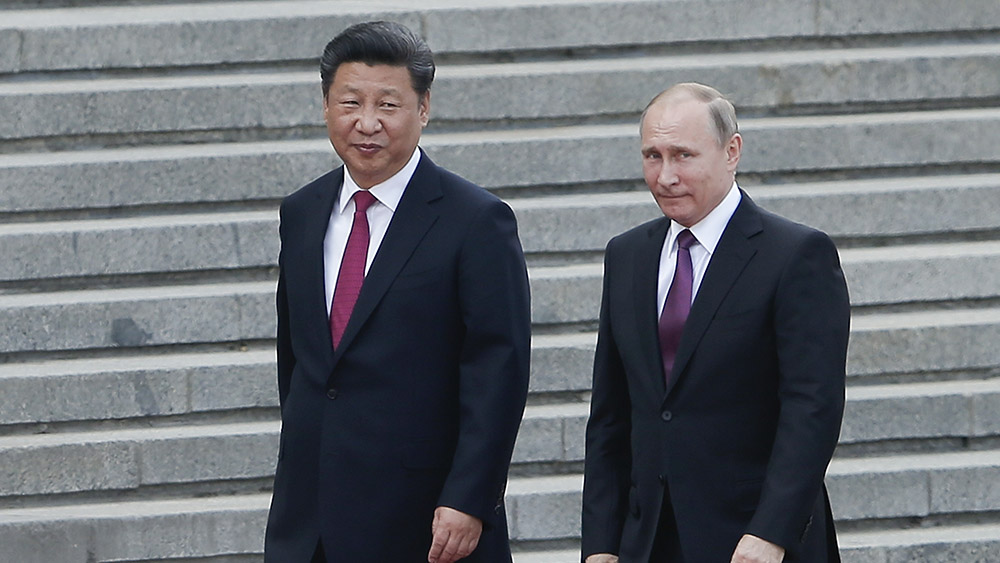The FAKE NEWS New York Times continues to push their CLIMATE CULT PONZI SCHEME agenda with fake energy stats and climate lies
While
record-cool temperatures spread across the USA this August, the globalists and Leftists want everyone to keep the faith that the earth is burning up and we’ll all burst into flames next year if we don’t give all our money to the Climate Cult.
The
New York Times (NYT), long regarded as a leading source of fact-checked journalism, has increasingly published
inaccurate and misleading information on energy and climate issues. More troubling, when such errors are pointed out, the paper frequently refuses to issue substantive corrections or instead provides evasive revisions that obscure the truth. This pattern undermines the paper’s stated corrections policy and risks eroding readers’ trust across all coverage, not just energy and climate.
- NYT publishes inaccurate energy and climate data – Multiple articles contained false claims, such as overstating China’s renewable transition, misidentifying the world’s top fossil fuel producer, and exaggerating U.S. renewable electricity generation.
- Historical distortions weaken reporting – Coverage of electric vehicles misrepresented their early 20th-century decline, ignoring clear data that EVs were already obsolete well before oil tax policy changes of 1926.
- Corrections policy is inconsistently applied – While the NYT quickly fixes minor errors (like names or dates), it often stonewalls or obfuscates when substantive factual inaccuracies are flagged, undermining trust in its reporting.
- Erosion of journalistic integrity – By mixing opinion with misreported data and refusing to acknowledge major mistakes, the NYT damages its credibility on energy and climate topics, leaving readers misinformed and doubting the paper’s standards.
The New York Times publishes false energy and climate information and refuses to correct its errors
Three recent articles illustrate the depth of the problem:
- Misreporting China’s Energy Mix
In a July 22 article, Max Bearak summarized remarks by UN Secretary-General António Guterres, blending direct quotes with unquoted interpretations that gave the impression Guterres had explicitly condemned U.S. fossil fuel policies. The transcript of his speech shows otherwise. Bearak also misrepresented
China’s energy transition, claiming the nation had moved “from a largely coal-powered economy” to one led by renewables. In fact, according to the
2025 Statistical Review of World Energy, coal still dominates China’s energy supply, accounting for 58.1 percent of consumption in 2024. Additionally, Bearak incorrectly stated that the U.S. and other wealthy nations are the world’s largest fossil fuel producers. Reliable data show that China is by far the largest, producing more coal, oil, and gas than any other country every year since 2005. Despite these clear factual errors being reported to NYT editors, no corrections were issued.
- Rewriting EV History
A May 26 piece by Ivan Penn argued that today’s electric vehicle (EV) struggles parallel those of the early 20th century, when political favoritism toward oil supposedly doomed early EVs. The article cites the 1926 oil depletion allowance as decisive in that shift. However, historical records and U.S. Department of Energy research show that EV market share peaked decades earlier, with their decline driven by cheaper gasoline, mass production of internal combustion engine vehicles, improved roads, and the invention of the electric starter. By 1925, 98–99 percent of vehicles in operation were already gasoline-powered — before the oil tax policy even existed. By ignoring these facts, the
article promotes a distorted narrative about both past and present EV markets.
- Misleading on U.S. Renewable Energy
In an April 23 column, David Wallace-Wells misstated that U.S. renewable energy generation had exceeded fossil fuels in 2024. In reality,
fossil fuels provided 60 percent of U.S. electricity, versus only 20 percent from renewables. The NYT later issued a correction, but instead of simply admitting error, it reframed the comparison to include nuclear power under the ambiguous term “clean sources.” Readers unfamiliar with this maneuver would likely believe renewables had surpassed fossil fuels, when they had not. This misleading correction highlights how the NYT sometimes protects preferred narratives rather than informing readers.
These cases reveal a troubling trend: the
New York Times allows inaccurate claims about energy and climate to persist, while avoiding honest corrections. Reporters fail to reflect basic, verifiable data; editors permit flawed narratives to stand; and corrections are either withheld or strategically obfuscated. If the NYT is to maintain its credibility, it must return to its own stated policy — acknowledging factual mistakes transparently and correcting them to inform readers, not shield writers or narratives.
Check out
ClimateAlarmism.news for updates on fake news outlets publishing fake climate and fake energy information to keep pushing their climate cult Ponzi scheme.
Sources for this article include:
NaturalNews.com
RealClearWire.com
EIA.gov












